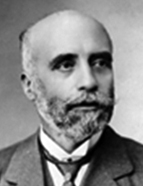

He wrote and published O dialecto mirandês [The Mirandese Dialect] (1883), based on data collected from interviews with a speaker of Mirandese. This original work, introducing a language that had never been described before to the scientific community, was granted an award from the Société des Langues Romanes, conferring immediate international acclaim upon its author.
Before graduating in 1886, he published his first work of an archaeological nature (Portugal Pré-histórico [Prehistoric Portugal], 1885), in which he pushed back the roots of Portuguese society to a period prior to the country's political independence. This theory stood in stark contrast to that of Alexandre Herculano, according to which Portugal was “a modern nation” born from the will of Afonso Henriques and the aristocratic elite of his entourage. It was also in Oporto that he launched the Revista Lusitana [Lusitanian Journal] project, which shall be discussed further ahead.
Between 1887 and 1888, while working as a medical doctor in Cadaval, he also undertook archaeological excavations. He soon swapped his career as a medical doctor to take up public office in Lisbon, which enabled him to advance in his research projects. First, he was curator at the Biblioteca Nacional [National Library] (1888-1911), a position he accumulated with that of director of the Museu Etnológico [Ethnological Museum] (1893-1929). He resigned from the Biblioteca upon his appointment as professor at the Faculdade de Letras da Universidade de Lisboa [Faculty of Arts of the University of Lisbon] (1911-1929), but kept his affiliation to the Museu.
During his first years at the Biblioteca Nacional, he focused equally on philology and archaeology. In 1888, he published A filologia portuguesa: esboço histórico (a propósito da reforma do Curso Superior de Letras de Lisboa) [Portuguese Philology: a historical outline (on the restructuring of the Lisbon Higher Arts Course], where he suggested introducing the subject into university studies, prefiguring himself as a candidate to teach it. This ambition did not bear fruits and he thus went on to create his own area by teaching numismatics at the Biblioteca Nacional.
